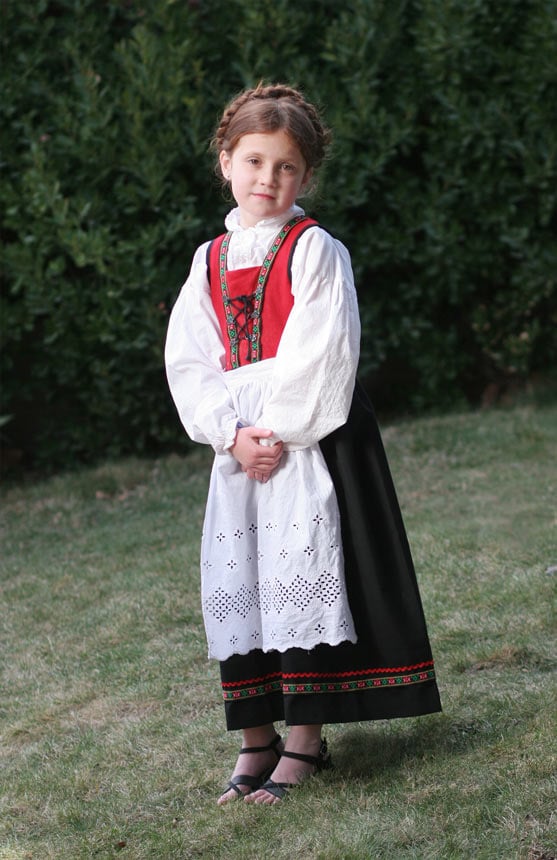 Syttende Mai, Norway’s national day, is of course a day to commemorate the signing of Norway’s constitution, however it is also a day to celebrate heritage, through a traditional folk costume known as a bunad.
Syttende Mai, Norway’s national day, is of course a day to commemorate the signing of Norway’s constitution, however it is also a day to celebrate heritage, through a traditional folk costume known as a bunad.
The re-kindling of Norway’s traditional folk costume, the bunad, is credited to Hulda Garborg. Garborg was a folk dancer, novelist, poet, playwright, and theater instructor. She traveled throughout Norway and promoted Norwegian culture at an important time when many were leaving Norway for a life in America or elsewhere.
Bunads are more popular among women, but men’s bunads are also available. They are not for everyday use, but for special occasions such as weddings, folk dancing, or religious occasions. The most common time to see a bunad out in public is Syttende Mai. Many Norwegians wear them to watch the parade or march in the parade.
Not everyone’s bunad looks alike either. There are certain “guidelines” for the bunad, the most distinctive being that the design varies by region. For example, the pattern for the Sognebunad looks completely different from the Ringeriksbunad. You are to wear a bunad from an area that you live in or have a genetic connection to. It is a way to portray your identity and pay homage to your ancestors.
There are many local varieties of the bunad, likely over 200 regional bunads. The main differences between the bunad that are dependent upon the region are the materials used to make it, the weaving pattern, and the accessories. Each dress tells its own story, and much can be learned about a person if you know how to decipher it.
Norway is one of the few countries that still places great importance on their national costume. It is a beautiful sense of pride instilled in the country. There is no better time than Syttende Mai to see a myriad of Norwegian bunads.
